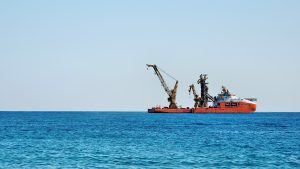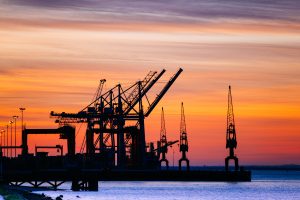If you’re in the maritime or shipping industry, you’ve likely heard about the IMO 2020 fuel regulations—but what do they really mean for your bunkering operations? More importantly, how can you ensure your vessels stay compliant without disrupting your supply chain or incurring penalties?
In this guide, we’ll break down what IMO 2020 requires, how it affects bunkering procedures, and what steps shipowners and operators should take to maintain compliance, especially at busy ports like those in the UAE.
Let’s get into it.
What Is IMO 2020?

The International Maritime Organisation (IMO) introduced new global sulphur limits for marine fuels that came into effect on January 1, 2020. These regulations mandate that all ships must use marine fuels with a sulphur content of no more than 0.5%—a drastic drop from the previous limit of 3.5%. In Emission Control Areas (ECAS), the limit is even tighter at 0.1%.
Why was this regulation implemented? To reduce sulphur oxide (SOx) emissions, which are harmful to human health and contribute to acid rain and ocean acidification.
For shipowners and bunker suppliers, this shift has meant adopting low-sulphur fuel oil (LSFO), using alternative fuels like LNG, or installing scrubbers to clean exhaust gases.
What Does Compliance Mean During Bunkering?
Bunkering is one of the most critical points where compliance with IMO 2020 can either be upheld or compromised. Here’s why:
- The type of fuel delivered must meet the 0.5% sulphur cap.
- There must be no cross-contamination between high-sulphur and low-sulphur fuel during the transfer process.
- Documentation like the Bunker Delivery Note (BDN) must be accurate and include a Fuel Oil Non-Availability Report (FONAR) if applicable.
So, how do you make sure your bunkering process ticks all the boxes?
Steps to Ensure Compliance During Bunkering
Source Fuel from a Reputable Bunkering Supplier

First things first—know your supplier. Working with an experienced and trustworthy fuel provider is half the battle. Mid Asia Bulk, for example, has built a solid reputation across UAE ports for delivering quality fuels that meet or exceed regulatory requirements. Their logistical systems are engineered to avoid contamination and ensure smooth fuel transfers.
Conduct Pre-Bunkering Checks
Before the bunkering operation begins, both the vessel and the bunker barge should perform compatibility checks. It’s critical to:
- Verify the sulphur content of the fuel with lab-tested documentation
- Check tank cleanliness to avoid contamination
- Confirm the fuel’s flash point, density, and viscosity for engine compatibility
Also, review the Material Safety Data Sheet (MSDS) and ensure that the BDN clearly states the fuel’s sulphur content.
Use Segregated Fuel Tanks
Cross-contamination can be a costly mistake. Use separate tanks for high- and low-sulphur fuels and purge fuel lines between transfers. Mid Asia Bulk’s operational precision and well-engineered transport systems help clients avoid these issues entirely.
Monitor Fuel Transfer in Real-Time
Keep an eye on the transfer process through flow meters and tank level indicators. This ensures you’re getting the right quantity and quality of fuel, and also provides transparency in case of any dispute or inspection.
Keep Detailed Records
Always retain a copy of the Bunker Delivery Note (BDN) for at least three years, as per MARPOL Annexe VI requirements. It should include:
- Supplier details
- Date of delivery
- Quantity and grade of fuel
- Sulphur content
Mid Asia Bulk helps streamline this documentation by ensuring that all legal and technical paperwork is delivered promptly and accurately.
Train Your Crew
It’s not enough to rely on suppliers—your crew must also understand fuel handling procedures and what compliance looks like on a daily basis. This includes knowing how to respond to spills, handle discrepancies in fuel specs, and document everything correctly.
Perform Regular Fuel Testing
Don’t skip on independent fuel testing. Even if your supplier is reliable, it’s always a good idea to test samples for sulphur content and other parameters. This can be done on board or through a third-party lab.
FAQS Around IMO 2020 Compliance During Bunkering
Can You Mix High-Sulphur And Low-Sulphur Fuels?
No, mixing fuels could result in non-compliant sulphur levels and damage to your engine. Always use segregated storage tanks and lines.
What Happens If Low-Sulphur Fuel Isn’t Available?
You must file a Fuel Oil Non-Availability Report (FONAR) and notify port authorities. However, relying on this isn’t a long-term solution.
Are Scrubbers Still A Viable Option?
Yes, but installing them is costly, and they come with their environmental considerations. Many operators in the UAE are opting for compliant fuels instead.
Why choose Mid Asia Bulk?
Mid Asia Bulk combines deep regional expertise with global standards in bunkering logistics. Since 2010, they’ve helped countless maritime operators streamline their fuel management while staying fully compliant with IMO and MARPOL regulations. With operations at all major UAE ports, they offer:
- On-time, contamination-free deliveries
- Expert coordination and planning
- Competitive pricing on low-sulphur fuels
- Transparent documentation and operational support
Final Thoughts
Complying with IMO 2020 fuel regulations doesn’t have to be overwhelming. With the right planning, training, and partners, your bunkering operations can remain efficient and penalty-free.
If you’re looking for a reliable, experienced partner for compliant fuel solutions in the UAE, Mid Asia Bulk is here to help. Our commitment to quality, precision, and long-term client relationships ensures you always get the best in bunkering services.
Ready to streamline your IMO 2020 compliance? Contact Mid Asia Bulk today and discover how our tailored bunkering solutions can keep your operations running smoothly





